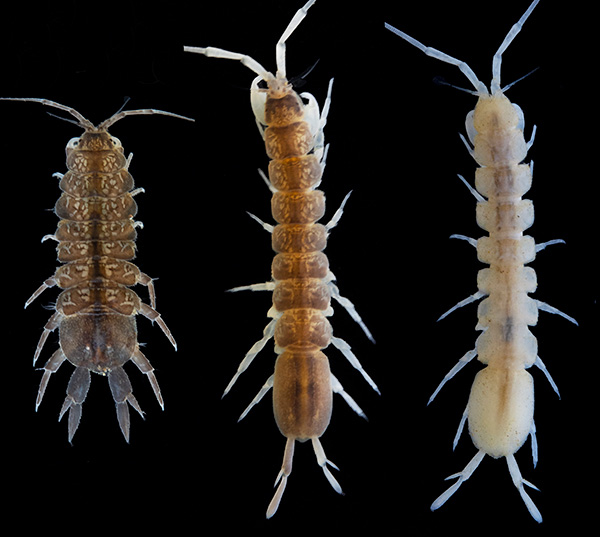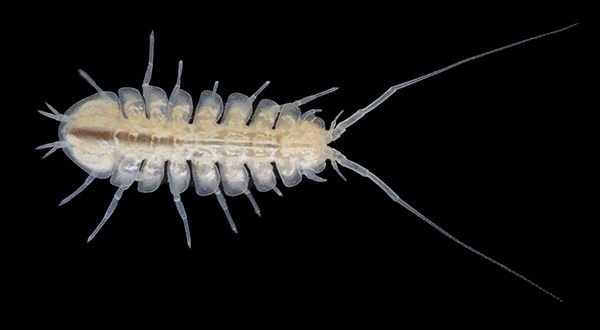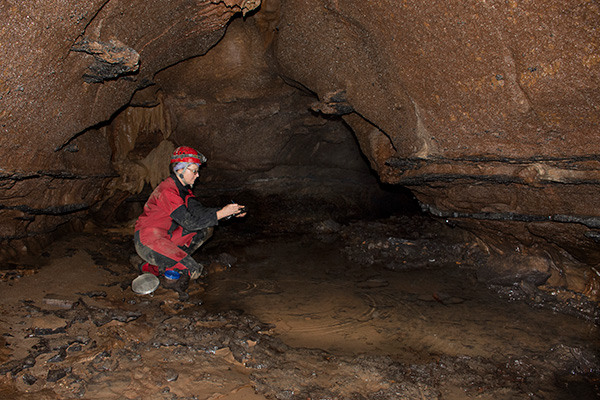
 Department of Conservation and Recreation
Department of Conservation and Recreation
Conserve. Protect. Enjoy.
 Department of Conservation and Recreation
Department of Conservation and Recreation
By Emi EndoPosted April 26, 2024
The Virginia Museum of Natural History recently published a new book, “Groundwater Isopods of Virginia (Isopoda: Asellidae and Cirolanidae),” based on research by staff at the Virginia Natural Heritage Program and collaborators. The research monograph focuses on several newly discovered species of isopods who live in cave, karst and shallow groundwater in Virginia and the Appalachians. Their research found that Virginia is extraordinary in terms of isopod biodiversity and dozens of species face extreme threat of extinction. We spoke with Wil Orndorff, DCR karst protection coordinator, and a co-author of the study.
Isopods are arthropods in the crustacean order Isopoda, a diverse group that includes both terrestrial and aquatic species. The common pillbug (a.k.a. roly-poly) that you find under rocks in your garden is an example of a terrestrial isopod. Aquatic isopods that commonly occur in surface waters are termed sow-bugs because females are commonly found with a brood of juveniles, resembling piglets nursing.
Groundwater isopods are found across the state, including in subterranean waters and springs where these waters return to the surface. They occur in the karst waters – cave streams and springs – of western Virginia, and in seeps associated with shallow groundwater of the coastal plain in eastern Virginia.
The presence of isopods in groundwater is generally a good thing. Except for a couple of counties, isopods are ubiquitous in healthy cave ecosystems across western Virginia. Some isopod species can tolerate a wide variety of water quality conditions, while others are more sensitive to factors such as dissolved oxygen levels and temperature in sediment. Where suitable habitat is present, but isopods are absent, investigation is warranted to check for water quality impairments.
Our international partnership with Dr. Julian Lewis (Indiana) and Dr. Florian Malard (University of Lyon, France) has resulted in the discovery of dozens of new groundwater isopod species in caves and springs of western Virginia, and seeps of the coastal plain.

Photo by Julian J. Lewis

Photo by Julian J. Lewis

Photo by Julian J. Lewis

Photo by Julian J. Lewis
Virginia’s isopod species are vulnerable to changes in groundwater quality or flow. Spring species are particularly susceptible to impact from impoundments (e.g. spring lakes), from water withdrawal and from direct access by livestock.
Cave species can be impacted by any activity in the cave stream’s watershed that affects water quality or flow, including land development, over-application of nutrients and high-density agricultural practices such as confined animal feeding operations, when not carefully sited and managed.
Species associated with seeps are very sensitive to disturbance of the watersheds that feed these seeps, which are generally poorly known and unfortunately occur in parts of the state under intense development pressure.
A free download of the book is available on the VMNH website (PDF). To inquire about purchasing hard copies of the book for $30.00 each plus shipping and handling, contact Ben Williams at ben.williams@vmnh.virginia.gov.
Categories
Conservation | Natural Heritage
Tags
karst

